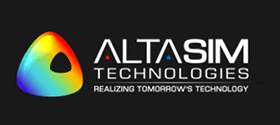Automatic dosing isn’t just about saving time; it’s about saving lives with unparalleled precision and safety. From insulin delivery to chemotherapy to hormone therapy, closed-loop systems are bringing precision medicine to the bedside and beyond.
And it’s simulation that plays a crucial role in validating these systems, ensuring their safety and efficacy.
Closed-Loop 101
In a closed-loop system, sensors continuously monitor a biological variable (such as glucose levels in a diabetic patient), a controller calculates the necessary response (such as adjusting insulin dosage), and an actuator (like an insulin pump) delivers the treatment. However, human physiology is complex and often unpredictable, with variables such as lag, noise, and drift affecting the system’s performance.
COMSOL helps engineers simulate the entire loop:
- Sensor input dynamics (lag, noise, drift)
- PID or adaptive control logic
- Pump behavior under variable resistance
- Environmental effects on system response
Dosing Devices in Real Conditions
Imagine a chemotherapy pump worn as a wearable. It needs to deliver precise dosages based on circadian rhythms, metabolic response, or body weight. Simulation allows:
- Real-time fluid delivery modeling
- Solute dispersion and tissue absorption tracking
- Heat transfer effects from ambient conditions
- Emergency shutoff simulations under failure conditions
Engineers can use COMSOL’s Application Builder to create user-facing tools that enable clinicians to explore different therapy profiles without compromising patient safety.
In Silico for the Win
Regulators love validated models. If a COMSOL simulation can demonstrate robust performance across edge-case scenarios, that evidence strengthens design validation and shortens the testing lifecycle. COMSOL’s role in this process is crucial, as it provides a platform for creating and validating these models.
Bottom line: automatic dosing saves time in the clinic and during R&D. Contact Us.
